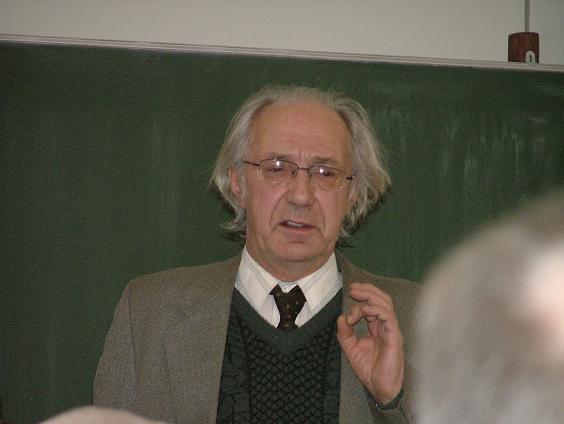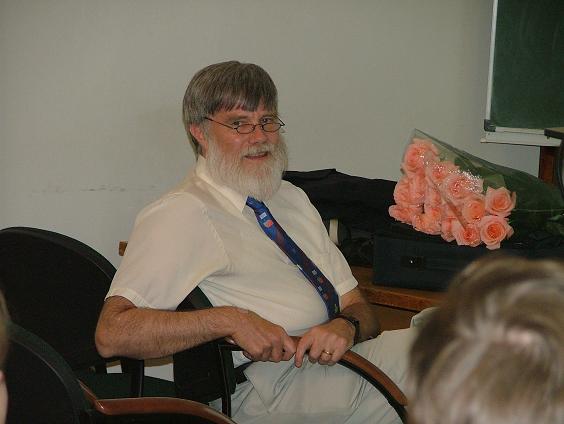2006 - В.А. Кузьмин и H. Georgi
Pomeranchuk Prize Winners 2006
According to the decision of the International Pomeranchuk Prize Committee the Pomeranchuk Prize for 2006 is awarded to Vadim Alexeevich Kuzmin (INR, Moscow) and Howard Georgi (Harvard University, Cambridge).

The Prize is awarded to Vadim A.Kuzmin for his pioneering work on baryon-number violating processes, baryogenesys, and on the fundamental properties of the high-energy cosmic rays.
Vadim A.Kuzmin is Professor of Physics, Corresponding Member of Russian Academy of Sciences (RAS). In 2003 V.Kuzmin received the M.A.Markov Prize for tremendous contribution to fundamental physics.
The contributions of Vadim Kuzmin to the field are quite known.
In 1966 he has co-authored the famous GZK (Greisen-Zatsepin-Kuzmin) limit for the ultra high energy cosmic rays. The study of the behavior of the flux of the cosmic rays near and beyond the GZK limit is a major subject of study in the modern cosmic ray experiments.
In 1970 he was the first to suggest the possibility of neutron-antineutron oscillations as a potentially observable baryon number violating process. In subsequent works he has developed the modern understanding of the manifestation of such oscillations in realistic experiments.
In 1985 he wrote (in collaboration with Rubakov and Shaposhnikov) the paper, where it was first found that the baryon number conservation is broken in the Standard Model at high temperatures above the electroweak phase transition. This paper, which was a culmination of his work of early '80-s on the baryon number nonconservation, laid the foundation for all the subsequent studies and the modern understanding of the baryogenesys in the early universe.

The Prize is awarded to Howard Georgi for the unification of Interactions and the understanding of the Standard Theory.
Howard Mason Georgi III is Harvard College Professor and Mallinckrodt Professor of Physics at Harvard University, where he is also Director of Undergraduate Studies in Physics and Master of Leverett House. In 1995 he was elected to the National Academy of Sciences and received the J.J.Sakurai Prize. In 2000 he shared the Dirac Medal with Jogesh Pati and Helen Quinn.
He is best known for early work in Grand Unification and gauge coupling unification withing SU(5) (Georgi-Glashow model) and SO(10) groups.
He later proposed te supersymmetric Standard Model with Savas Dimopoulos in 1981.
It is also worth metioning his role in the Georgi-Quinn-Weinberg computation showing that the natural mass scale of unification is relatively close to the Plank scale and that the proton lifetime can naturally be extremely long.
He has since worked on several different areas of physics including composite Higgs models, heavy quark effective theory, dimensional deconstruction and little Higgs theories.
Most recently, with Arkani-Hamed and Cohen, he has found a class of 4-dimensional field theories in which extra dimensions can arise dynamically, providing a new slant of the meaning of space. The topological properties of such theories may shed light on critical issues such as the breaking of SU(2)xU(1) and supersymmetry. He continues to study these issues in the hopes they will shed light on the meaning of gauge symmetry.

